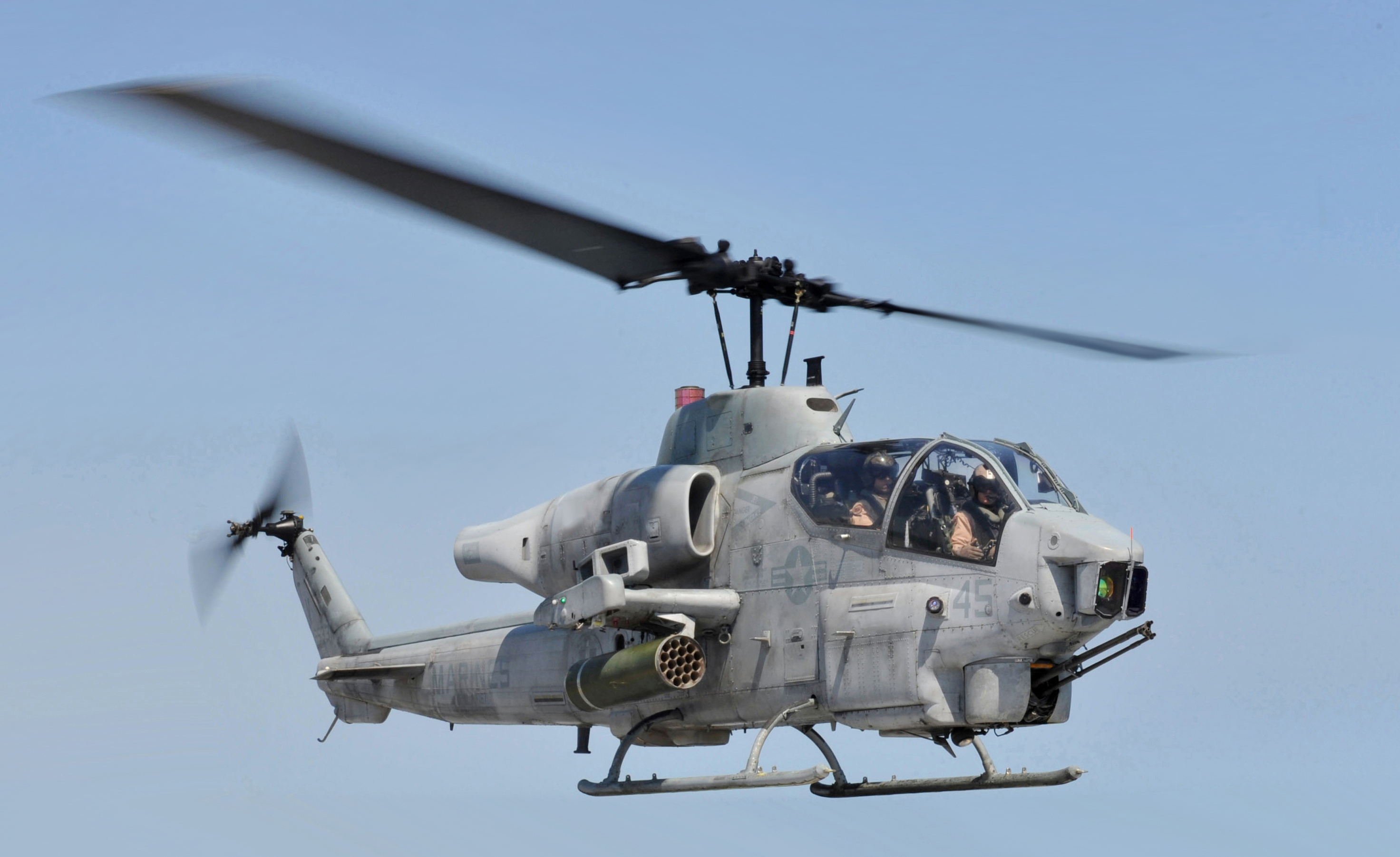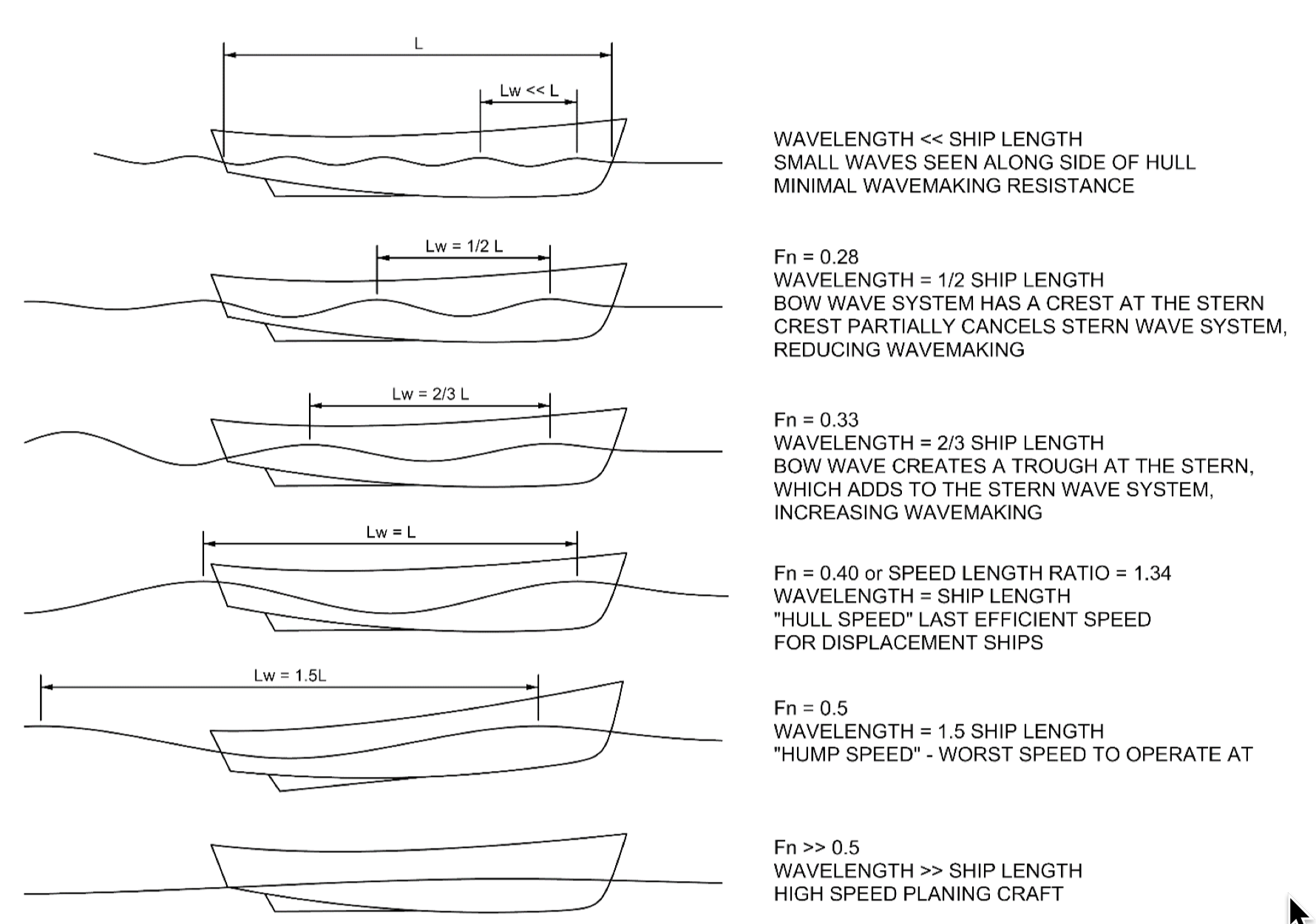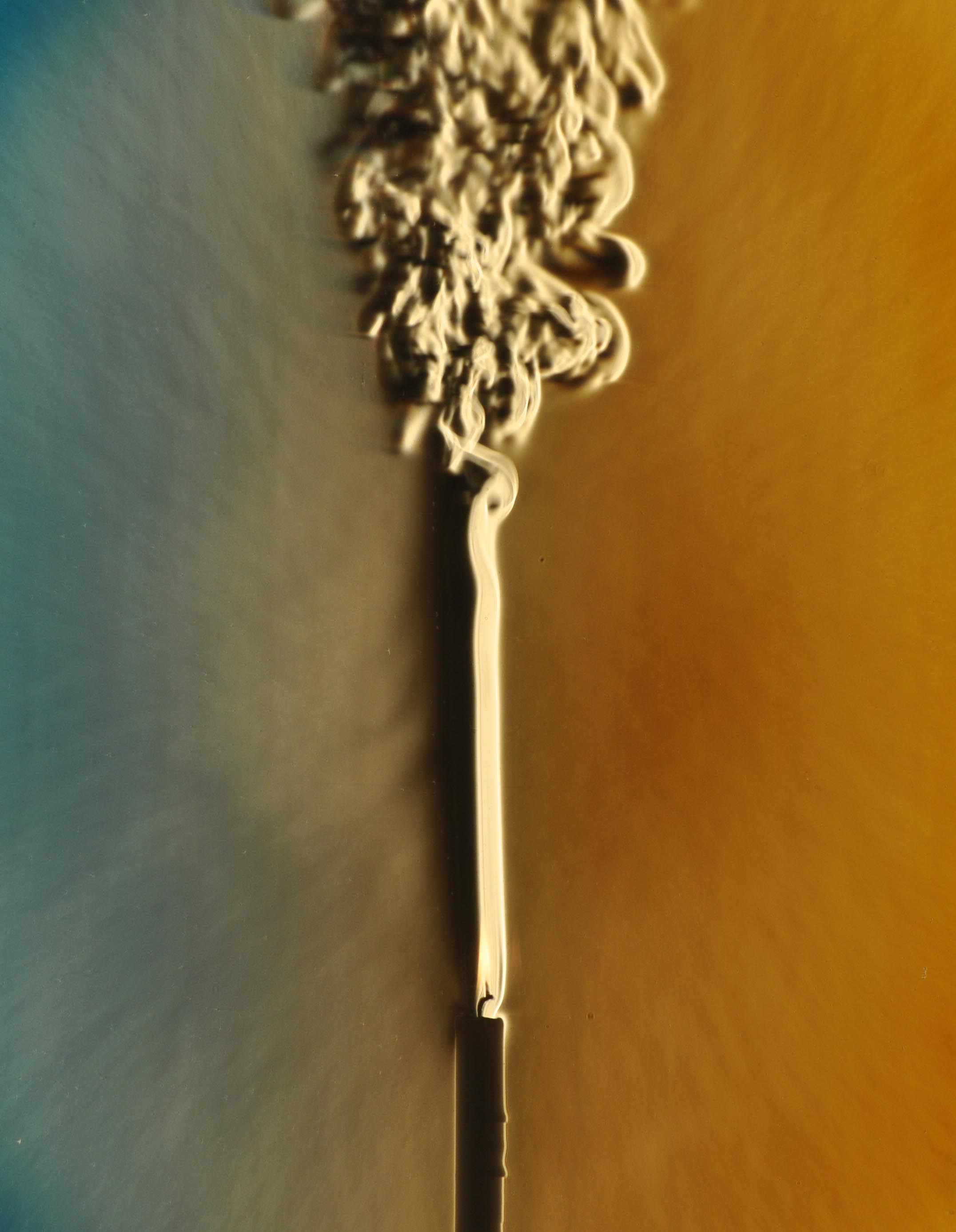|
Lock Number
In helicopter aerodynamics, the Lock number is the ratio of aerodynamic forces, which act to lift the rotor blades, to inertial forces, which act to maintain the blades in the plane of rotation. It is named after C. N. H. Lock, a British aerodynamicist who studied autogyros in the 1920s. Typical rotorcraft blades have a Lock number between 3 and 12, usually approximately 8. The Lock number is typically 8 to 10 for articulated rotors and 5 to 7 for hingeless rotors. High-stiffness blades may have a Lock number up to 14. Larger blades have a higher mass and more inertia, so tend to have a lower Lock number. Helicopter rotors with more than two blades can have lighter blades, so tend to have a higher Lock number. A low Lock number gives good autorotation characteristics due to higher inertia, however this comes with a mass penalty. Ray Prouty writes, "The previously discussed numbers: Mach, Reynolds and Froude are used in many fields of fluid dynamic studies. The Lock number is o ... [...More Info...] [...Related Items...] OR: [Wikipedia] [Google] [Baidu] |
Helicopter
A helicopter is a type of rotorcraft in which Lift (force), lift and thrust are supplied by horizontally spinning Helicopter rotor, rotors. This allows the helicopter to VTOL, take off and land vertically, to hover (helicopter), hover, and to fly forward, backward and laterally. These attributes allow helicopters to be used in congested or isolated areas where fixed-wing aircraft and many forms of short take-off and landing (STOL) or short take-off and vertical landing (STOVL) aircraft cannot perform without a runway. The Focke-Wulf Fw 61 was the first successful, practical, and fully controllable helicopter in 1936, while in 1942, the Sikorsky R-4 became the first helicopter to reach full-scale mass production, production. Starting in 1939 and through 1943, Igor Sikorsky worked on the development of the Vought-Sikorsky VS-300, VS-300, which over four iterations, became the basis for modern helicopters with a single main rotor and a single tail rotor. Although most earlier ... [...More Info...] [...Related Items...] OR: [Wikipedia] [Google] [Baidu] |
Helicopter Rotor
On a helicopter, the main rotor or rotor system is the combination of several rotary wings (rotor blades) with a control system, that generates the aerodynamic lift (force), lift force that supports the weight of the helicopter, and the thrust that counteracts aerodynamic drag in forward flight. Each main rotor is mounted on a vertical mast over the top of the helicopter, as opposed to a helicopter tail rotor, which connects through a combination of drive shaft(s) and gearboxes along the tail boom. The blade pitch is typically controlled by the pilot using the helicopter flight controls. Helicopters are one example of rotary-wing aircraft (rotorcraft). The name is derived from the Greek words ''helix'', helik-, meaning spiral; and ''pteron'' meaning wing. Design principles Overview The helicopter rotor is powered by the engine, through the transmission, to the rotating mast. The mast is a cylindrical metal shaft that extends upward from—and is driven by—the transmission. ... [...More Info...] [...Related Items...] OR: [Wikipedia] [Google] [Baidu] |
Autogyro
An autogyro (from Greek and , "self-turning"), gyroscope, gyrocopter or gyroplane, is a class of rotorcraft that uses an unpowered rotor in free autorotation to develop lift. A gyroplane "means a rotorcraft whose rotors are not engine-driven, except for initial starting, but are made to rotate by action of the air when the rotorcraft is moving; and whose means of propulsion, consisting usually of conventional propellers, is independent of the rotor system." While similar to a helicopter rotor in appearance, the autogyro's unpowered rotor disc must have air flowing upward across it to make it rotate. Forward thrust is provided independently, by an engine-driven propeller. It was originally named the ''autogiro'' by its Spanish inventor and engineer, Juan de la Cierva, in his attempt to create an aircraft that could fly safely at low speeds. He first flew one on January 1923, at Cuatro Vientos Airport in Madrid. The aircraft resembled the fixed-wing aircraft of the d ... [...More Info...] [...Related Items...] OR: [Wikipedia] [Google] [Baidu] |
Rotorcraft
A rotary-wing aircraft, rotorwing aircraft or rotorcraft is a heavier-than-air aircraft with rotor wing, rotary wings that spin around a vertical mast to generate lift (force), lift. Part 1 (Definitions and Abbreviations) of Subchapter A of Chapter I of Title 14 of the U. S. Code of Federal Regulations states that rotorcraft "means a heavier-than-air aircraft that depends principally for its support in flight on the lift generated by one or more rotors." The assembly of several rotor blades mounted on a single mast is referred to as a helicopter rotor, rotor. The International Civil Aviation Organization (ICAO) defines a rotorcraft as "supported in flight by the reactions of the air on one or more rotors". Rotorcraft generally include aircraft where one or more rotors provide lift throughout the entire flight, such as helicopters, gyroplanes, autogyros, and gyrodynes Compound rotorcraft augment the rotor with additional thrust engines, propellers, or static lifting surfaces. Some ... [...More Info...] [...Related Items...] OR: [Wikipedia] [Google] [Baidu] |
Autorotation
Autorotation is a state of flight in which the main rotor system of a helicopter or other rotary-wing aircraft turns by the action of air moving up through the rotor, as with an autogyro, rather than engine power driving the rotor. Bensen, Igor.How they fly – Bensen explains all" ''Gyrocopters UK''. Accessed: 10 April 2014. Quote: "air.. (is) deflected downward"Charnov, Bruce HCierva, Pitcairn and the Legacy of Rotary-Wing Flight ''Hofstra University''. Accessed: 22 November 2011. The term ''autorotation'' dates to a period of early helicopter development between 1915 and 1920, and refers to the rotors turning without the engine."Autorotation", ''Dictionary.com Unabridged (v 1.1)''. Random House, Inc. 17 April 2007 It is analogous to the |
Airfoil
An airfoil (American English) or aerofoil (British English) is a streamlined body that is capable of generating significantly more Lift (force), lift than Drag (physics), drag. Wings, sails and propeller blades are examples of airfoils. Foil (fluid mechanics), Foils of similar function designed with water as the working fluid are called hydrofoils. When oriented at a suitable angle, a solid body moving through a fluid deflects the oncoming fluid (for fixed-wing aircraft, a downward force), resulting in a force on the airfoil in the direction opposite to the deflection. This force is known as aerodynamic force and can be resolved into two components: lift (perpendicular to the remote freestream velocity) and drag (Parallel (geometry), parallel to the freestream velocity). The lift on an airfoil is primarily the result of its angle of attack. Most foil shapes require a positive angle of attack to generate lift, but Camber (aerodynamics), cambered airfoils can generate lift at zero ... [...More Info...] [...Related Items...] OR: [Wikipedia] [Google] [Baidu] |
Moment Of Inertia
The moment of inertia, otherwise known as the mass moment of inertia, angular/rotational mass, second moment of mass, or most accurately, rotational inertia, of a rigid body is defined relatively to a rotational axis. It is the ratio between the torque applied and the resulting angular acceleration about that axis. It plays the same role in rotational motion as mass does in linear motion. A body's moment of inertia about a particular axis depends both on the mass and its distribution relative to the axis, increasing with mass and distance from the axis. It is an intensive and extensive properties, extensive (additive) property: for a point particle, point mass the moment of inertia is simply the mass times the square of the perpendicular distance to the axis of rotation. The moment of inertia of a rigid composite system is the sum of the moments of inertia of its component subsystems (all taken about the same axis). Its simplest definition is the second Moment (physics), mome ... [...More Info...] [...Related Items...] OR: [Wikipedia] [Google] [Baidu] |
Coning (aerodynamics)
Coning is a phenomenon which affects helicopter rotor discs, where the blades describe a cone shape as they rotate. For a helicopter on the ground, as the blades rotate, they describe a horizontal disc due to centrifugal force. However, as the helicopter generates lift, the blades are pulled upwards into a cone shape.Central Flying School: Manual of FlyingVolume 12: Helicopters Section 1-17. Coning results from the balancing of centrifugal and aerodynamic forces. The coning angle depends on RPM, gross weight and g-force. The ratio of aerodynamic forces to inertial forces is called the Lock number. Excessive coning can occur if the RPM is allowed to drop too low or the helicopter is operated at an excessive gross weight, or under turbulent conditions or if the helicopter experiences excessive g-force. An excessively coned disc will generate less lift due to reduced disc area. If rotor RPM drops too low, the centrifugal force will reduce until is no longer sufficient to balance ... [...More Info...] [...Related Items...] OR: [Wikipedia] [Google] [Baidu] |
Mach Number
The Mach number (M or Ma), often only Mach, (; ) is a dimensionless quantity in fluid dynamics representing the ratio of flow velocity past a boundary to the local speed of sound. It is named after the Austrian physicist and philosopher Ernst Mach. \mathrm = \frac, where: * is the local Mach number, * is the local flow velocity with respect to the boundaries (either internal, such as an object immersed in the flow, or external, like a channel), and * is the speed of sound in the medium, which in air varies with the square root of the thermodynamic temperature. By definition, at Mach1, the local flow velocity is equal to the speed of sound. At Mach0.65, is 65% of the speed of sound (subsonic), and, at Mach1.35, is 35% faster than the speed of sound (supersonic). The local speed of sound, and hence the Mach number, depends on the temperature of the surrounding gas. The Mach number is primarily used to determine the approximation with which a flow can be treated as an i ... [...More Info...] [...Related Items...] OR: [Wikipedia] [Google] [Baidu] |
Froude Number
In continuum mechanics, the Froude number (, after William Froude, ) is a dimensionless number defined as the ratio of the flow inertia to the external force field (the latter in many applications simply due to gravity). The Froude number is based on the speed–length ratio which he defined as: \mathrm = \frac where is the local flow velocity (in m/s), is the local gravity field (in m/s2), and is a characteristic length (in m). The Froude number has some analogy with the Mach number. In theoretical fluid dynamics the Froude number is not frequently considered since usually the equations are considered in the high Froude limit of negligible external field, leading to homogeneous equations that preserve the mathematical aspects. For example, homogeneous Euler equations are conservation equations. However, in naval architecture the Froude number is a significant figure used to determine the resistance of a partially submerged object moving through water. Origins In open c ... [...More Info...] [...Related Items...] OR: [Wikipedia] [Google] [Baidu] |
Reynolds Number
In fluid dynamics, the Reynolds number () is a dimensionless quantity that helps predict fluid flow patterns in different situations by measuring the ratio between Inertia, inertial and viscous forces. At low Reynolds numbers, flows tend to be dominated by laminar flow, laminar (sheet-like) flow, while at high Reynolds numbers, flows tend to be turbulence, turbulent. The turbulence results from differences in the fluid's speed and direction, which may sometimes intersect or even move counter to the overall direction of the flow (Eddy (fluid dynamics), eddy currents). These eddy currents begin to churn the flow, using up energy in the process, which for liquids increases the chances of cavitation. The Reynolds number has wide applications, ranging from liquid flow in a pipe to the passage of air over an aircraft wing. It is used to predict the transition from laminar–turbulent transition, laminar to turbulent flow and is used in the scaling of similar but different-sized fl ... [...More Info...] [...Related Items...] OR: [Wikipedia] [Google] [Baidu] |
Helicopter Aerodynamics
A helicopter is a type of rotorcraft in which lift and thrust are supplied by horizontally spinning rotors. This allows the helicopter to take off and land vertically, to hover, and to fly forward, backward and laterally. These attributes allow helicopters to be used in congested or isolated areas where fixed-wing aircraft and many forms of short take-off and landing (STOL) or short take-off and vertical landing (STOVL) aircraft cannot perform without a runway. The Focke-Wulf Fw 61 was the first successful, practical, and fully controllable helicopter in 1936, while in 1942, the Sikorsky R-4 became the first helicopter to reach full-scale production. Starting in 1939 and through 1943, Igor Sikorsky worked on the development of the VS-300, which over four iterations, became the basis for modern helicopters with a single main rotor and a single tail rotor. Although most earlier designs used more than one main rotor, the configuration of a single main rotor accompanied by a ... [...More Info...] [...Related Items...] OR: [Wikipedia] [Google] [Baidu] |







